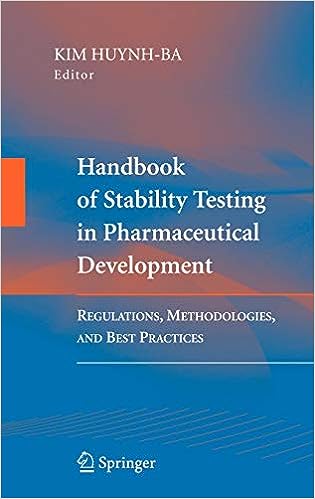Complete Guide to ICH Stability Guidelines: Q1A–Q1E, Q8, Q9 and Beyond
Introduction
The International Council for Harmonisation of Technical Requirements for Pharmaceuticals for Human Use (ICH) has significantly shaped the global regulatory landscape, particularly in the realm of stability testing. The ICH Q1A–Q1E series outlines the scientific and regulatory expectations for conducting Stability Studies, while Q8 and Q9 provide a broader quality framework.
This article provides a comprehensive, expert-level breakdown of the key ICH stability guidelines
and their practical implications for pharmaceutical professionals, regulatory strategists, and quality assurance experts.1. Overview of the ICH Q1 Series
The Q1 series encompasses six pivotal guidelines that define how Stability Studies should be conducted, reported, and interpreted. These include:
- Q1A(R2): Stability Testing of New Drug Substances and Products
- Q1B: Photostability Testing
- Q1C: Stability Testing for New Dosage Forms
- Q1D: Bracketing and Matrixing Designs for Stability Testing
- Q1E: Evaluation of Stability Data
- Q5C: Stability Testing of Biotechnological/Biological Products (closely related)
ICH Q1A(R2): General Framework
This foundational guideline sets the baseline requirements for conducting Stability Studies. It covers:
- Study types: real-time, accelerated, intermediate, and stress testing
- Recommended storage conditions and time points
- Climatic zone considerations (I–IVb)
- Packaging systems and container closure
- Test parameters: assay, degradation products, pH, physical appearance
ICH Q1B: Photostability Testing
This guideline focuses on evaluating the impact of light exposure on drug substances and drug products. It requires using both UV and visible light, with control samples protected from light.
ICH Q1C: New Dosage Forms
This supplements Q1A by addressing how stability data should be generated for new dosage forms (e.g., solution, suspension, tablet) derived from an already approved drug substance.
ICH Q1D: Bracketing and Matrixing
Introduces study designs to reduce the number of stability samples without compromising data quality.
- Bracketing: Testing only the extremes (e.g., lowest and highest strengths)
- Matrixing: Testing a subset of combinations of factors (e.g., time points, container types)
ICH Q1E: Evaluation of Stability Data
Guidance on how to statistically analyze and interpret stability data to justify retest periods or shelf lives. Includes regression analysis, poolability of batches, and extrapolation rules.
2. Broader Quality Integration: Q8, Q9, and Q10
ICH Q8(R2): Pharmaceutical Development
While not specific to stability, Q8 emphasizes a Quality by Design (QbD) approach, encouraging early-stage consideration of stability risks in formulation and process development.
- Stresses Design Space and Control Strategy
- Links Critical Quality Attributes (CQAs) to stability performance
ICH Q9: Quality Risk Management
Stability testing strategies should be risk-based. Q9 provides a framework for prioritizing studies, choosing worst-case conditions, and establishing bracketing or matrixing plans.
ICH Q10: Pharmaceutical Quality System
Q10 emphasizes lifecycle management and change control, both of which are integral to long-term stability strategy.
3. Zone-Specific Stability Conditions Under ICH
The ICH guidelines identify five climatic zones that influence long-term and accelerated testing conditions:
| Zone | Climate | Long-Term Conditions | Accelerated Conditions |
|---|---|---|---|
| I | Temperate | 21°C / 45% RH | 40°C / 75% RH |
| II | Subtropical | 25°C / 60% RH | 40°C / 75% RH |
| III | Hot Dry | 30°C / 35% RH | 40°C / 75% RH |
| IVa | Hot Humid | 30°C / 65% RH | 40°C / 75% RH |
| IVb | Very Hot Humid | 30°C / 75% RH | 40°C / 75% RH |
4. Application to CTD Submission
Stability data prepared under ICH guidelines is submitted in the Common Technical Document (CTD) format. Specifically:
- Module 3.2.P.8: Stability data summary, protocols, commitment
- Includes raw data tables, statistical evaluations, and graphical representations
5. Case Study: Applying Q1 Guidelines in ANDA Filing
A generic pharmaceutical company preparing an ANDA submission for a capsule product used ICH Q1A(R2) for their stability protocol. Using Q1D, they employed bracketing for two strengths, reducing testing burden by 50%. They applied Q1E to justify 36-month shelf life based on long-term and accelerated data analyzed using regression modeling. The application was accepted by the FDA with no queries related to stability.
6. Common Mistakes in ICH Stability Implementation
- Insufficient time points in accelerated testing
- Failure to assess light sensitivity per Q1B
- Inconsistent storage conditions across sites
- Not applying Q1E principles to justify extrapolation
- Overlooking bracketing/matrixing opportunities under Q1D
7. ICH Q5C: Stability of Biological Products
This guideline is often considered alongside Q1A-E when dealing with biologics. It addresses specific issues like protein aggregation, potency loss, and microbial stability.
Parameters Assessed
- Protein content and aggregation
- Biological activity (e.g., ELISA)
- pH, osmolality, and clarity
8. Bridging Stability with Q8–Q10 Framework
Modern stability strategies benefit from a holistic integration of Q1–Q10 guidelines. For instance:
- Q8: Use Design of Experiments (DoE) to assess stability-critical variables
- Q9: Implement Failure Mode Effect Analysis (FMEA) to identify risks in the stability chain
- Q10: Ensure change control for chamber qualification or excipient changes is linked to stability risk reassessment
9. Impact of ICH Guidelines on Regulatory Submissions
- Global harmonization reduces redundant testing
- Streamlined documentation via CTD Module 3
- Predictable review pathways at FDA, EMA, PMDA
- Faster approval times for well-documented stability programs
Conclusion
Mastering the ICH stability guidelines—Q1A to Q1E, along with Q8 and Q9—is essential for anyone involved in pharmaceutical development, regulatory strategy, or quality assurance. These globally accepted standards provide a robust framework for designing and evaluating stability programs, thereby ensuring that drug products remain safe, effective, and compliant throughout their lifecycle. A proactive understanding of these principles allows pharmaceutical companies to avoid costly regulatory delays and maintain high-quality standards. For additional support and detailed SOPs aligned with ICH stability testing, visit Stability Studies.

